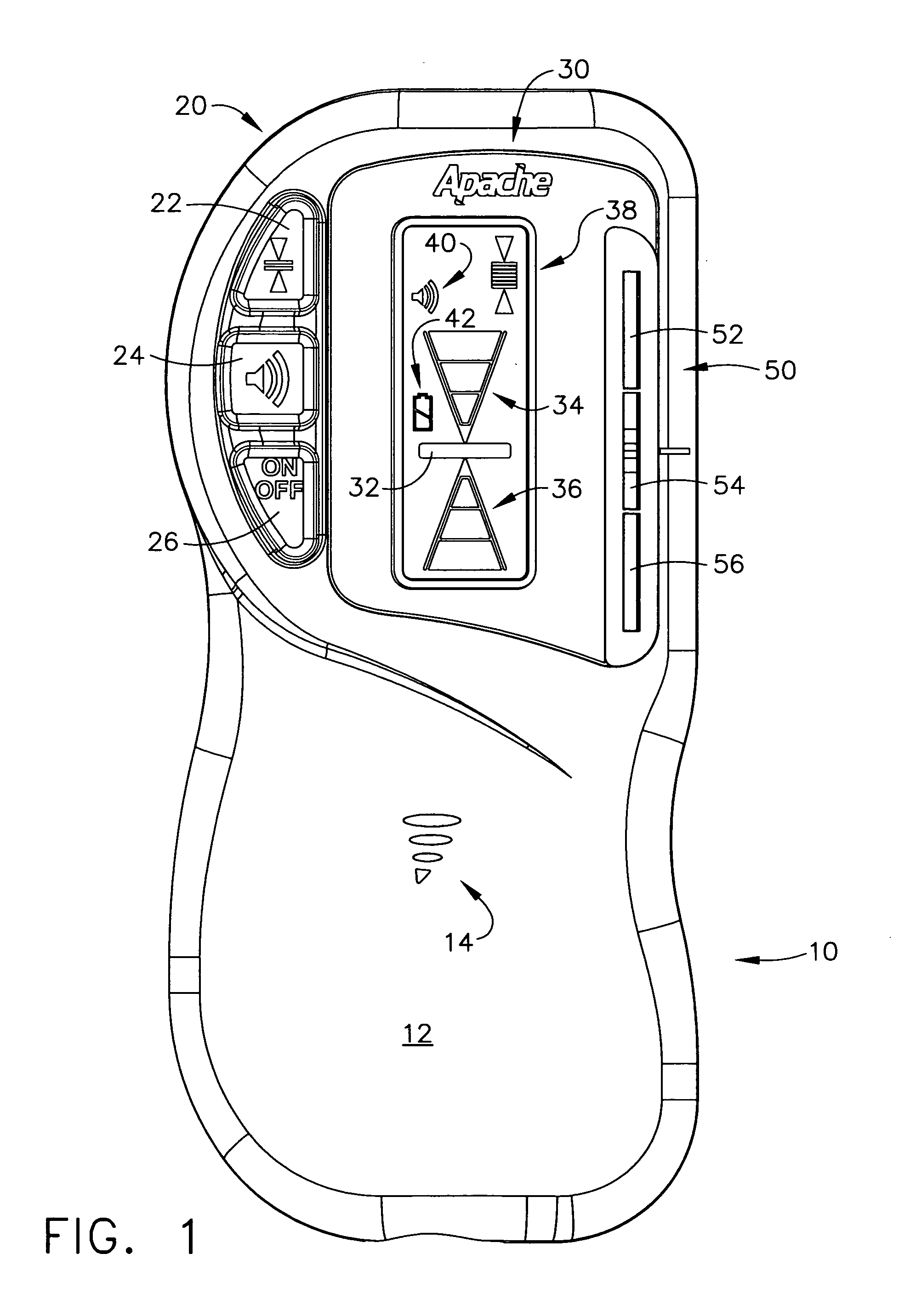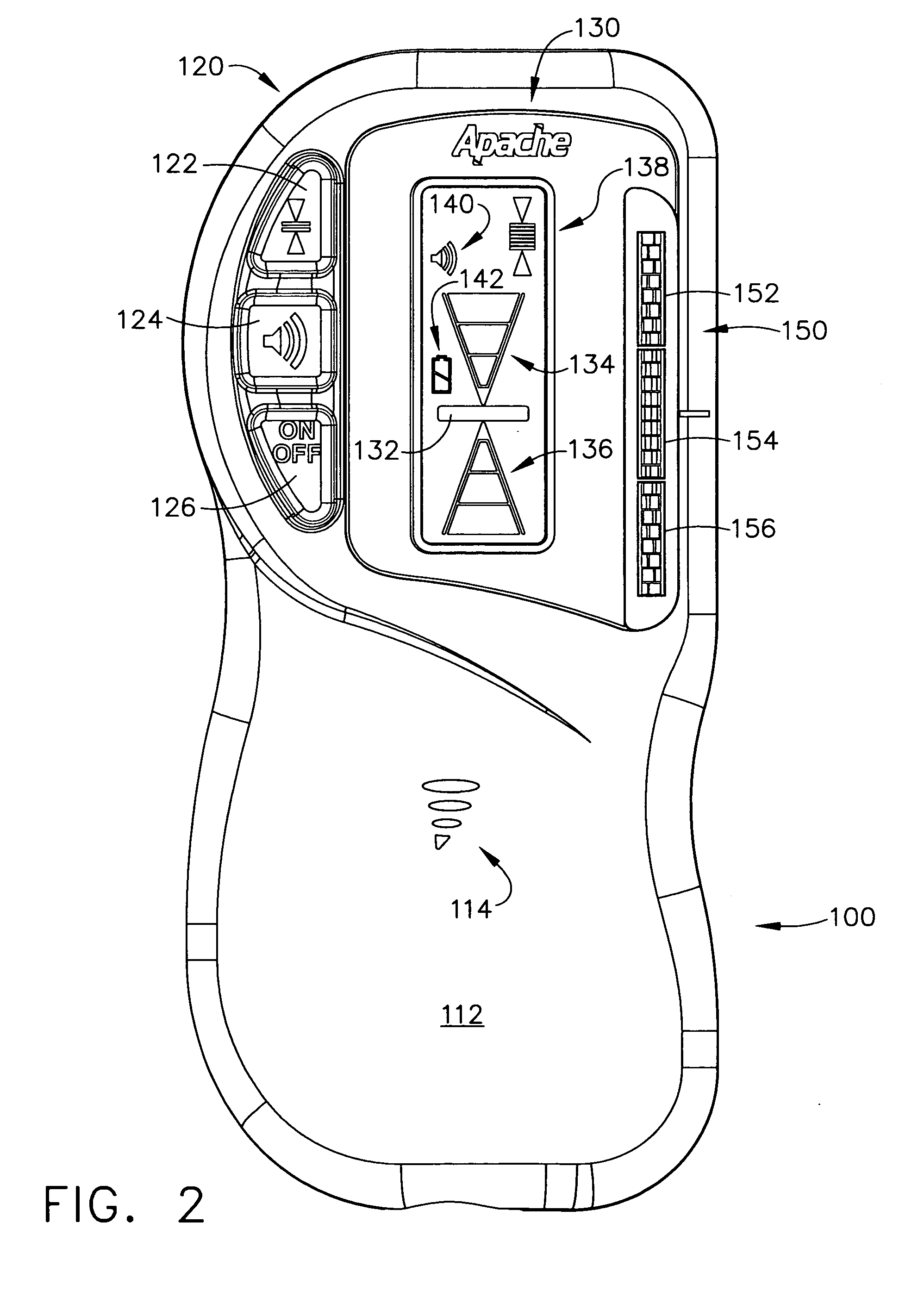Modulated laser light detector
a laser light and detector module technology, applied in the field of laser light detectors, can solve the problems of noise on the incoming sine wave, unstable elevation indication, and/or correlator approach of the '617 patent, and achieve the effects of accurate detection of the peak value of laser light signals, low noise characteristics, and reliable measurement of peak magnitudes
- Summary
- Abstract
- Description
- Claims
- Application Information
AI Technical Summary
Benefits of technology
Problems solved by technology
Method used
Image
Examples
Embodiment Construction
[0027]Reference will now be made in detail to the present preferred embodiment of the invention, an example of which is illustrated in the accompanying drawings, wherein like numerals indicate the same elements throughout the views.
[0028]Referring now to FIG. 1, a modulated laser beam detector unit is illustrated, generally designated by the reference numeral 10. Its front outer surface at 12 is typically a plastic molded housing, which has some openings at 14 to allow for an internal beeper or other type of audio output device to be used. A set of pushbutton switches generally designated by the reference numeral 20 are located along the upper left-hand side of the case. These switches are designated by the reference numerals 22, 24, and 26, in which the top switch 22 acts as a dead band control switch, the middle switch 24 enables the beeper (or other type of audio output device) to be activated, and the bottom switch 26 is the unit's ON-OFF switch.
[0029]The modulated laser beam de...
PUM
 Login to View More
Login to View More Abstract
Description
Claims
Application Information
 Login to View More
Login to View More - R&D
- Intellectual Property
- Life Sciences
- Materials
- Tech Scout
- Unparalleled Data Quality
- Higher Quality Content
- 60% Fewer Hallucinations
Browse by: Latest US Patents, China's latest patents, Technical Efficacy Thesaurus, Application Domain, Technology Topic, Popular Technical Reports.
© 2025 PatSnap. All rights reserved.Legal|Privacy policy|Modern Slavery Act Transparency Statement|Sitemap|About US| Contact US: help@patsnap.com



